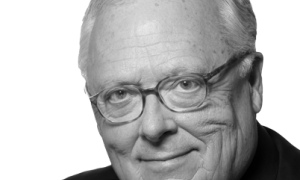A recent Gallup poll asked Americans to name the No. 1 issue facing the country. What do you suppose came out on top? Not the economy. Not health care. Not immigration. No, the issue that headed the list was terrorism.
This hardly seems surprising in the wake of the Paris and San Bernardino attacks. Yet that didn’t stop certain critics from dismissing this fear and airing the statistics that show you have more to fear from car accidents, heart disease and ingrown toenails than from terrorism.
Others blamed the media for supposedly fanning the flames with its coverage. “If you’ve been watching television for the last month, all you have been seeing, all you have been hearing about, is these guys with masks or black flags who are potentially coming to get you,” President Obama told National Public Radio.
But however technically correct it may be to put the terrorism threat in context, or to suggest that the media tends to sensationalize matters, it’s still misguided. Yes, you’re more likely to die from cancer than from terrorism. Yes, it’s been more than 14 years since Sept. 11, 2001. But that doesn’t mean people are wrong to be worried.
After all, the lack of another Sept. 11 — to date — doesn’t mean the terrorists aren’t trying. There have been, in fact, no fewer than 75 known plots aimed at the United States since that dark day in 2001. “The increasing frequency of plots over the last year is stunning, as is the diversity of the threat,” says terrorism expert James Carafano, a 25-year Army veteran who has taught at West Point.
Many of these plots have been stopped, but not all. Among the ones carried out:
• The intentional driving of an SUV into a crowd of students at the University of North Carolina-Chapel Hill in 2006.
• The shooting at an army recruitment office in Little Rock, Ark., in 2009.
• The shooting by U.S. Army Major Nidal Hasan at Fort Hood, Texas, also in 2009.
• The bombings at the Boston Marathon in 2013.
We can’t afford to wait around for the next “success.” What we need, according to Mr. Carafano, is a new 9/11 commission.
Some might call this unnecessary. Commissions come and go, producing reports that nobody reads, right? Often they do, but the 9/11 Commission is a notable exception. It was a rare bipartisan success, one that produced a final report that became a national bestseller. Some of the credit for the fact that we haven’t had another 9/11 goes to the work they did in the wake of that devastating attack.
Don’t look to Congress to do the job. Things have become far too partisan in recent years. The House Homeland Security Committee has done some good work — its report looking at terrorist travel and foreign fighters is useful.
But jurisdiction and oversight of homeland security remains divided among many committees. “Some say that the kinds of walls and restrictions that inhibited effective cooperation before 9/11 are being rebuilt,” Mr. Carafano says.
Perhaps most importantly, a new commission could reassess a threat that has evolved considerably since Sept. 11. We don’t have al Qaeda trying to hijack large airliners and fly them into tall buildings in New York. We have ISIS and its fellow travelers trying to bomb and shoot at people in towns you wouldn’t even necessarily think would make a terrorist hit list.
Congress and the president should at least consider creating a new commission to assess the problem as it currently stands. Anything to shed some much-needed light on the nature of the threat as it exists today would be an improvement.
“If you know the enemy and know yourself, you need not fear the results of a hundred battles,” writes Sun Tzu, the legendary Chinese general. A new 9/11 commission can help us do that.
Ed Feulner is founder of the Heritage Foundation (heritage.org).
This piece originally appeared in The Washington Times.

